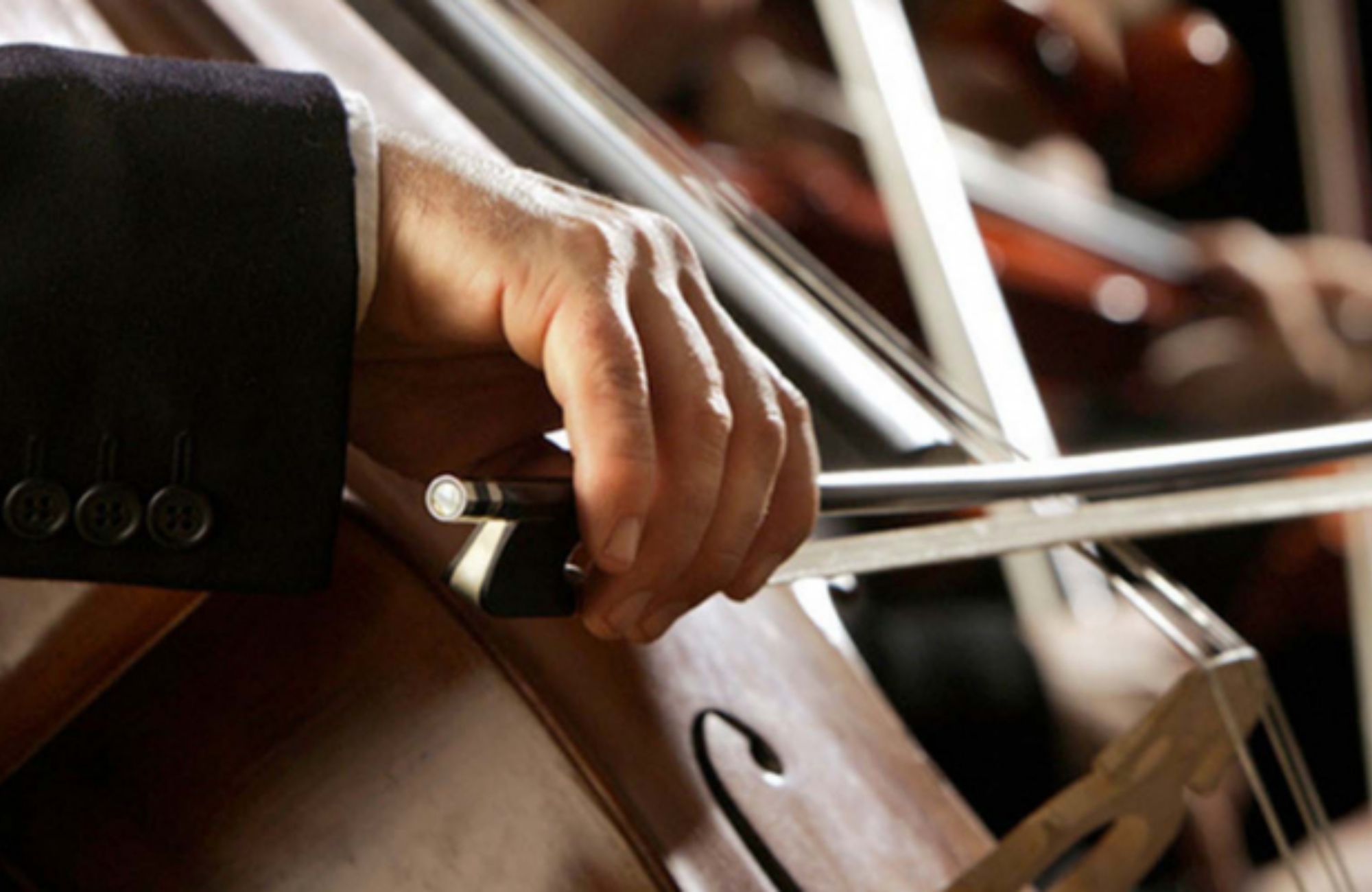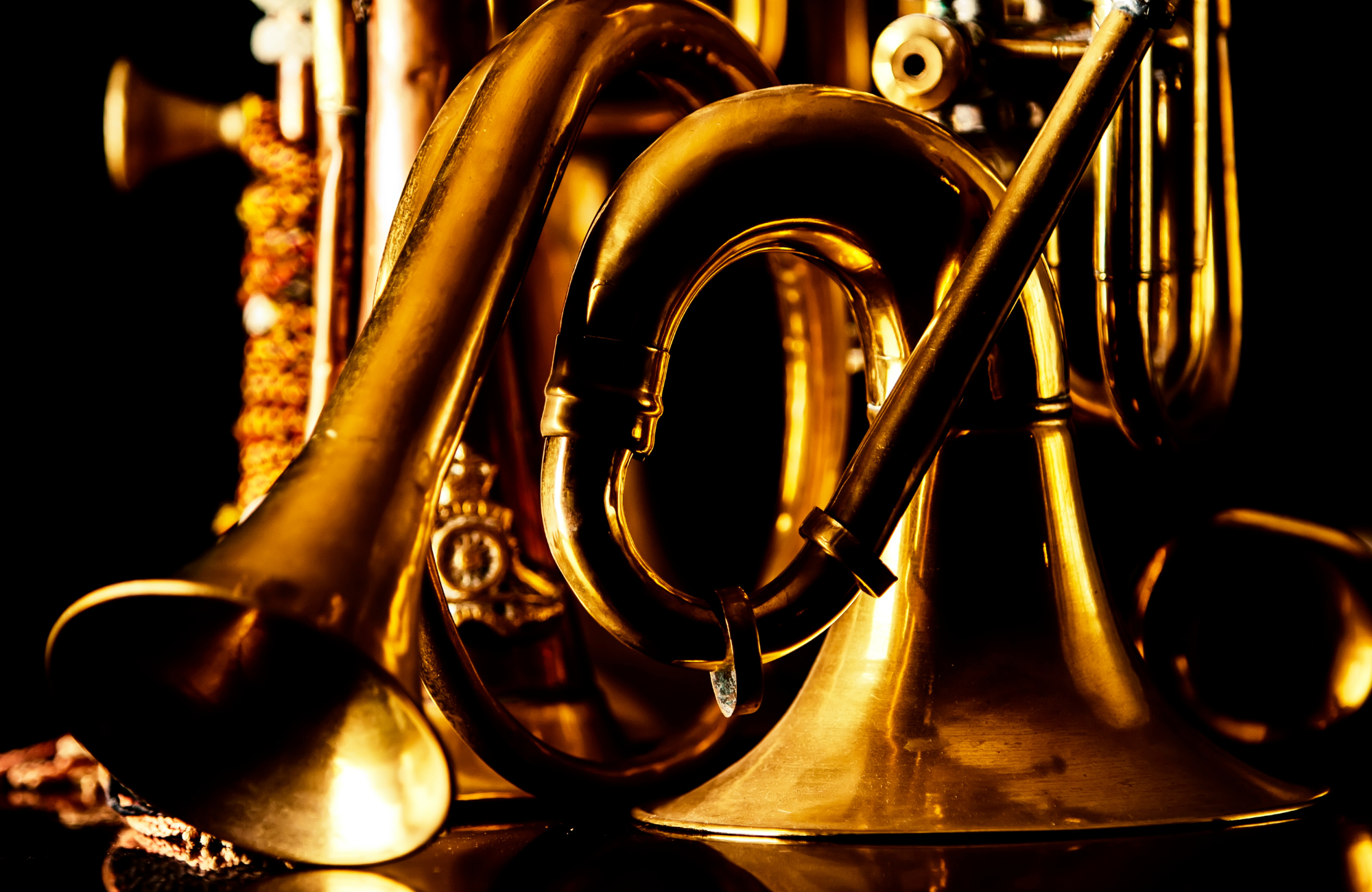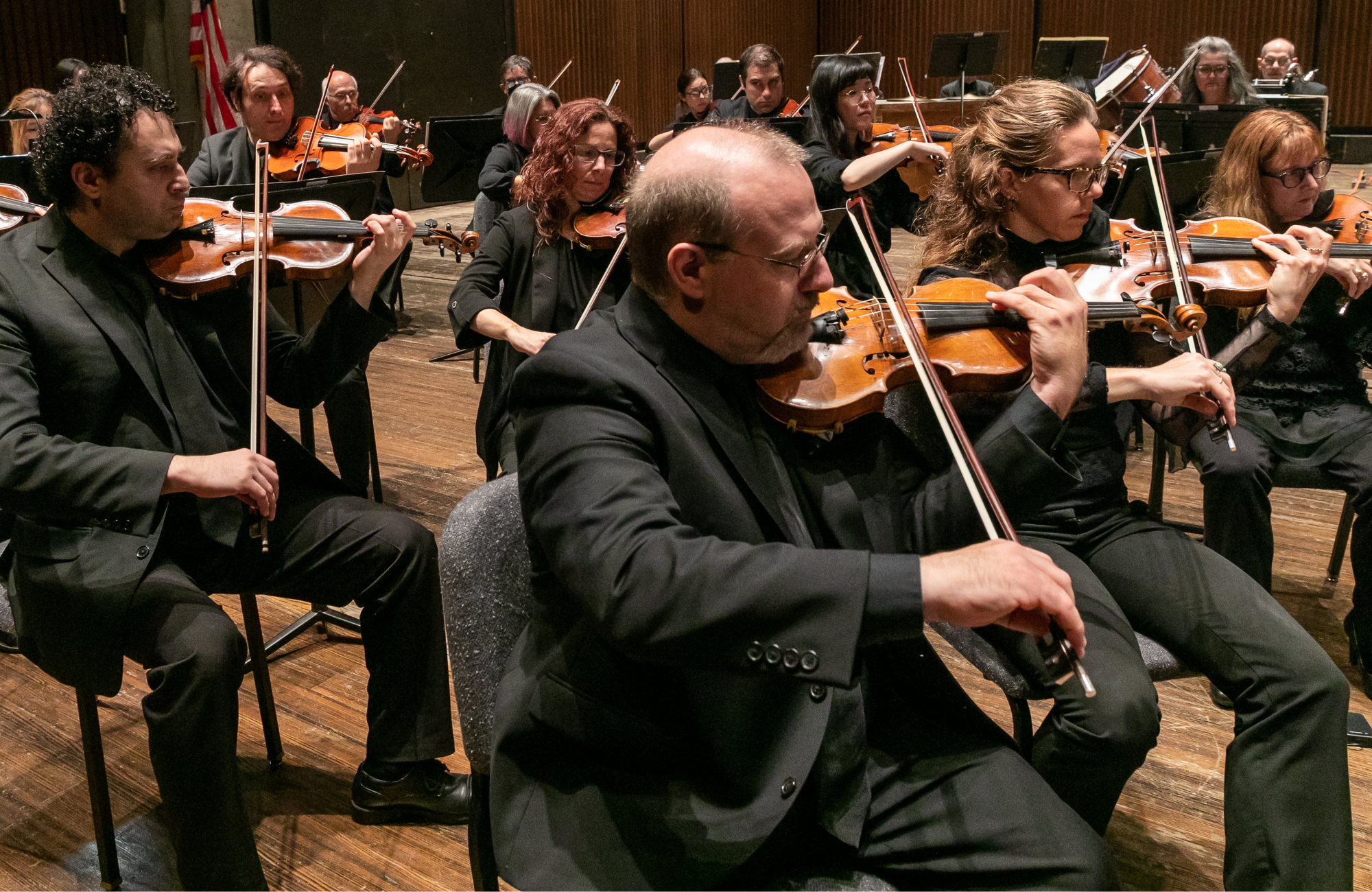This program features Symphoria musicians in a wide variety of solo works, and concludes with Haydn’s groundbreaking Farewell Symphony. Enjoy solo performances by Ben Dettleback (trombone), John Friedrichs (clarinet), Xue Su (flute), and Gregory Wood (cello), plus the Symphoria Percussion Ensemble.
PROGRAM
MUZQUIZ: Auburn Runout
KARLIN: Percussion
SAINT-SAËNS: Tarentelle
BRUCH: Kol Nidre
GRØNDAHL: Concerto for Trombone (Finale: Maestoso – Rondo)
HAYDN: Symphony No. 45 in F-sharp minor, “Farewell”
Join us before the concert for a Symphoria Brunch at 317 @ Montgomery!

Carving Station
Roast Beef
French Toast
Scrambled Eggs
Bacon
Home fries
Seasonal Vegetables
Fresh Fruit
Bagels w/Cream Cheese & Lox
Assorted Pastries
PROGRAM NOTES
This afternoon’s concert wraps up the classical offerings of our tenth anniversary season with a wide-ranging farewell that celebrates players from all four sections of the orchestra.
To open, we have two short works performed by the percussionists, each piece featuring a different kind of instrument. Auburn Run-Out, written in 1978 for the Syracuse Symphony Percussion Ensemble by our own Ernest Muzquiz, highlights the drums. Influenced by the “fast and furious” solos of the jazz drummers Ernest admired (especially his childhood idol Gene Krupa), this was intended as a piece in which the group could “come out ...
This afternoon’s concert wraps up the classical offerings of our tenth anniversary season with a wide-ranging farewell that celebrates players from all four sections of the orchestra.
To open, we have two short works performed by the percussionists, each piece featuring a different kind of instrument. Auburn Run-Out, written in 1978 for the Syracuse Symphony Percussion Ensemble by our own Ernest Muzquiz, highlights the drums. Influenced by the “fast and furious” solos of the jazz drummers Ernest admired (especially his childhood idol Gene Krupa), this was intended as a piece in which the group could “come out with guns blazing.” The double pun of the title makes its spirit clear. A “run-out” is a quick out-of-town concert—but the word “run” also evokes the idea of speed. As for Auburn: for decades, that city has been a frequent run-out destination for Syracuse orchestras—but the word also evokes a fiery red that Ernest tried to reflect in the music. Written in mixed meters (no marching band music here), it’s a quick blast of rhythmic energy.
Since it’s scored almost exclusively for drums, Auburn Run-Out is non-melodic. Re:Percussion, composed in 1961 by Frederick James Karlin (1936–2004) is, in contrast, written for keyboard instruments (vibraphone, xylophone, marimba) and timpani, and relies heavily on melody and harmony. A prolific composer in a variety of styles, Karlin scored over 170 films and TV shows (starting with Up the Down Staircase); and Ernest is convinced that he’s the only Academy-Award-winning composer to have written a piece for percussion. He won his Oscar in 1971 for the song “For All We Know,” later made famous by The Carpenters—but despite its reliance on melody, Re:Percussion shows a different, less mellow, side of his art.
We jump back a century to the 1857 Tarantella by Camille Saint-Saëns (1835–1921). In fact, we may be jumping back further than that in spirit. Saint-Saëns was a great pianist as well as a composer—novelist Marcel Proust was especially taken with his “purity and transparency” when he played Mozart. And Principal Flutist Xue Su hears a lot of Mozart in this piece, too, especially in the way Saint-Saëns calls on the soloist to “switch octaves fast”—something far more difficult to do on a wind instrument than on, say, a violin. In temperament, she says, the Tarantella has a “teasing, cheeky” tone—and if the fast, high-flying music sounds airborne to you, then both soloists agree. For Xue, it’s much like the “Aviary” section in Saint-Saëns’ Carnival of the Animals; for Assistant First Chair Clarinetist John Friedrichs, it’s like “aerial acrobatics.” All in all, says John, like a lot of Saint-Saëns’s music, it combines lyricism and “scherzando effect”— and is “an absolute delight to the ear.” More often than not, the Tarantella is heard in a reduction for flute, clarinet, and piano. This afternoon, you get a rare chance to hear the original version, which shows the youthful composer in full command of orchestral sound.
As you listen to the Tarantella, you may feel that Saint-Saëns has captured the essence of his two solo instruments. As you listen to the 1880 Kol Nidrei, you might feel, similarly, that his contemporary Max Bruch (1838–1920) has managed to capture the essence of the cello. In most other respects, however, Bruch’s profound meditation has little in common with Saint-Saëns’s light-hearted romp. The opening section, in a mournful D minor, is based on the traditional Yom Kippur chant with, as Assistant Principal Cellist Greg Wood points out, the cello taking the role of the cantor. Then comes what Greg calls a “beautiful moment” where Bruch turns to D Major with a new theme—this taken from a collection of Hebrew Melodies published in the early 19th century by Isaac Nathan, a collection that originally set texts contributed by Lord Byron. Bruch’s shift to major has a lasting effect, and when the opening material returns, it does so in D major, leading to a “stunningly beautiful ending with a hopeful note.”
The percussion pieces, the Saint-Saëns, and the Bruch all focus on, even emphasize, the most familiar characteristics of their featured instruments. For Principal Trombone Ben Dettelback, the Trombone Concerto by Danish conductor and composer Launy Grøndahl (1886–1960) is attractive partly for the opposite reason—because it so steadily avoids listeners’ most common associations with the instrument. What comes to mind when you think of the trombone? John Williams and John Phillip Sousa? Or perhaps the voices of the adults in the Peanuts cartoons? As Ben points out, the trombone can certainly play loud, and it can certainly play glissandos (slides) as well as produce other strange sounds. But, “just because the trombone can doesn’t mean that it should,” and this Concerto emphasizes its lyrical side. Hearing it in ninth or tenth grade had a major impact on Ben, and it’s remained one of his favorite pieces. The last movement, which he is performing this afternoon, is a rondo with a jaunty, syncopated main theme (one that, coincidentally but appropriately, has a slight kinship to the main theme of Saint-Saëns’s Introduction and Rondo Capriccioso). It’s the kind of piece that gets “stuck in your head”—the kind of piece you walk out of the room humming to yourself. And this excerpt will surely leave you wanting to hear the rest of the concerto.
Our final work swerves in yet a different direction—or perhaps in several different directions. The Symphony No. 45 by Franz Joseph Haydn (1732–1809) doesn’t feature any solo instruments—and then, yet again, it does, more so than anything else on the program. If you know the story behind the symphony’s origins already, you’ll understand that paradox. If not—well, I don’t believe in spoilers, so I won’t give the details, although I promise that things will be clear once the concert is over. All the historical background you need before hearing the Symphony is that it was written in 1772 as Haydn’s shrewd protest against the conditions imposed on the Esterhazy Orchestra, who had to abandon their families in order to take up summer residence at their patron’s country estate. (In essence, this was a months-long run-out.) Obviously, the situation that originally inspired Haydn no longer pertains. But as you’ll see, the work that grew out of it still provides an appropriate finale to the season’s classical programming.
The Symphony No. 45 is one of Haydn’s middle-period sturm und drang (storm and stress) symphonies, and it shares many qualities with its siblings. At the time, Haydn was generating new techniques for heightening the emotional effects of his music, and this work is one of his most experimental, starting from the fact that it’s probably the only 18th-century symphony written in the difficult key of F-sharp Minor, with a third movement in the even more treacherous F-sharp Major. How treacherous? Well, since horns in those days didn’t have valves, they were severely limited in what notes were available to them; as a result, Haydn apparently had to have special crooks (removable sections of the instrument’s tubing) manufactured for his horn players so that they would be able to navigate their parts. The work is formally inventive, too. But you don’t need perfect pitch or the ability to analyze the music’s formal layout to appreciate its power. No matter what your musical background, you’re apt to be gripped by the nearly manic desperation of the outer movements, or by the secretive, mournfulness of the second—or by the odd jolts that dot the third, which seems unable to come to a real conclusion.
Once we reach the end, you’ll know how Haydn expressed his protest and why this work is nicknamed the “Farewell” Symphony. But don’t worry: We’ll be back for our last Pops Concert, as well as for our summer performances. And, of course, for our eleventh season next year, starting on September 30.
Peter J. Rabinowitz
Have any comments or questions? Please write to me at prabinowitz@ExperienceSymphoria.org
FEATURED ARTISTS

Described as bringing an “artisan storyteller’s sensitivity… shaping passages with clarity and power via beautifully sculpted dynamics… revealing orchestral character not seen or heard before” (Arts Knoxville) Lawrence Loh enjoys a dynamic career as a conductor of orchestras all over the world.
After an extensive two ...
Described as bringing an “artisan storyteller’s sensitivity… shaping passages with clarity and power via beautifully sculpted dynamics… revealing orchestral character not seen or heard before” (Arts Knoxville) Lawrence Loh enjoys a dynamic career as a conductor of orchestras all over the world.
After an extensive two year search, Lawrence Loh was recently named Music Director of the Waco Symphony Orchestra beginning in the Spring of 2024. Since 2015, he has served as Music Director of The Syracuse Orchestra (formerly called Symphoria), the successor to the Syracuse Symphony Orchestra. “The connection between the organization and its audience is one of the qualities that’s come to define Syracuse’s symphony as it wraps up its 10th season, a milestone that might have seemed impossible at the beginning,” (Syracuse.com) The Syracuse Orchestra and Lawrence Loh show that it is possible to create a “new, more sustainable artistic institution from the ground up.”
Appointed Assistant Conductor of the Pittsburgh Symphony in 2005, Mr Loh was quickly promoted to Associate and Resident Conductor within the first three years of working with the PSO. Always a favorite among Pittsburgh audiences, Loh returns frequently to his adopted city to conduct the PSO in a variety of concerts. Mr. Loh previously served as Music Director of the West Virginia Symphony Orchestra, Music Director of the Northeastern Pennsylvania Philharmonic, Artistic Director and Principal Conductor of the Syracuse Opera, Music Director of the Pittsburgh Youth Symphony Orchestra, Associate Conductor of the Dallas Symphony Orchestra, Associate Conductor of the Colorado Symphony Orchestra and Music Director of the Denver Young Artists Orchestra.
Mr. Loh’s recent guest conducting engagements include the San Francisco Symphony, Dallas Symphony, North Carolina Symphony, Baltimore Symphony, Sarasota Orchestra, Florida Orchestra, Pensacola Symphony, Atlanta Symphony, National Symphony, Detroit Symphony, San Diego Symphony, Seattle Symphony, National Symphony (D.C.), Utah Symphony, Rochester Philharmonic, Indianapolis Symphony, Calgary Philharmonic, Buffalo Philharmonic, Albany Symphony and the Cathedral Choral Society at the Washington National Cathedral. His summer appearances include the festivals of Grant Park, Boston University Tanglewood Institute, Tanglewood with the Boston Pops, Chautauqua, Sun Valley, Shippensburg, Bravo Vail Valley, the Kinhaven Music School and the Performing Arts Institute (PA).
As a self-described “Star Wars geek” and film music enthusiast, Loh has conducted numerous sold-out John Williams and film music tribute concerts. Part of his appeal is his ability to serve as both host and conductor. “It is his enthusiasm for Williams’ music and the films for which it was written that is Loh’s great strength in this program. A fan’s enthusiasm drives his performances in broad strokes and details and fills his speaking to the audience with irresistible appeal. He used no cue cards. One felt he could speak at filibuster length on Williams’ music.” (Pittsburgh Tribune)
Mr Loh has assisted John Williams on multiple occasions and has worked with a wide range of pops artists from Chris Botti and Ann Hampton Callaway to Jason Alexander and Idina Menzel. As one of the most requested conductors for conducting Films in Concert, Loh has led Black Panther, Star Wars (Episodes 4-6), Jaws, Nightmare Before Christmas, Jurassic Park, Casablanca, The Wizard of Oz and Singin’ in the Rain, among other film productions.
Lawrence Loh received his Artist Diploma in Orchestral Conducting from Yale, his Masters in Choral Conducting from Indiana University and his Bachelor of Arts from the University of Rochester. Lawrence Loh was born in southern California of Korean parentage and raised in Carlisle, Pennsylvania. He and his wife Jennifer have a son, Charlie, and a daughter, Hilary. Follow him on instagram @conductorlarryloh or Facebook at @lawrencelohconductor or visit his website, www.lawrenceloh.com

Ben Dettelback is currently Principal Trombone of The Syracuse Orchestra and Instructor of Trombone at the Syracuse University Setnor School of Music. Ben also served as Principal Trombone of the Cayuga Chamber Orchestra (Ithaca, NY) from 2018-2024 and has performed with groups such as the Buffalo Philharmonic, Rochester Philharmonic/...
Ben Dettelback is currently Principal Trombone of The Syracuse Orchestra and Instructor of Trombone at the Syracuse University Setnor School of Music. Ben also served as Principal Trombone of the Cayuga Chamber Orchestra (Ithaca, NY) from 2018-2024 and has performed with groups such as the Buffalo Philharmonic, Rochester Philharmonic/Oratorio Society, Skaneateles Festival, West Point Band, Princeton Symphony, and American Institute of Musical Study in Graz, Austria.
Ben appeared as soloist with The Syracuse Orchestra and Maestro Lawrence Loh performing the final movement of L. Grondahl’s Trombone Concerto during the 2022-23 Season. He was also named a finalist in the 2018 International Trombone Associations Alto Trombone Competition. Ben can be heard alongside Brad Kerns, David Seder, and Clint Woltering on the 2024 trombone quartet album titled “Goldberg Variations, BMW 988” as well as the 2020 Naxos American Classics recording “Bernstein Songfest” with the National Orchestral Institute and James Judd.
In addition to his teaching duties at Setnor, Ben is the founder and director of the Setnor Slides Trombone Ensemble and has presented masterclasses at Ithaca College, Binghamton University, and Colgate University. Ben also served on the orchestral faculty of the 2023 Varna International Music Academy.
Ben received a Bachelor of Music and Performer’s Certificate from the Eastman School of Music followed by a Master of Music from Yale University where he studied with Larry Zalkind and Scott Hartman respectively. Ben is currently working towards a Doctor of Musical Arts back at Eastman.
When not playing trombone, Ben can probably be found hanging out with his cat, Kimchi.
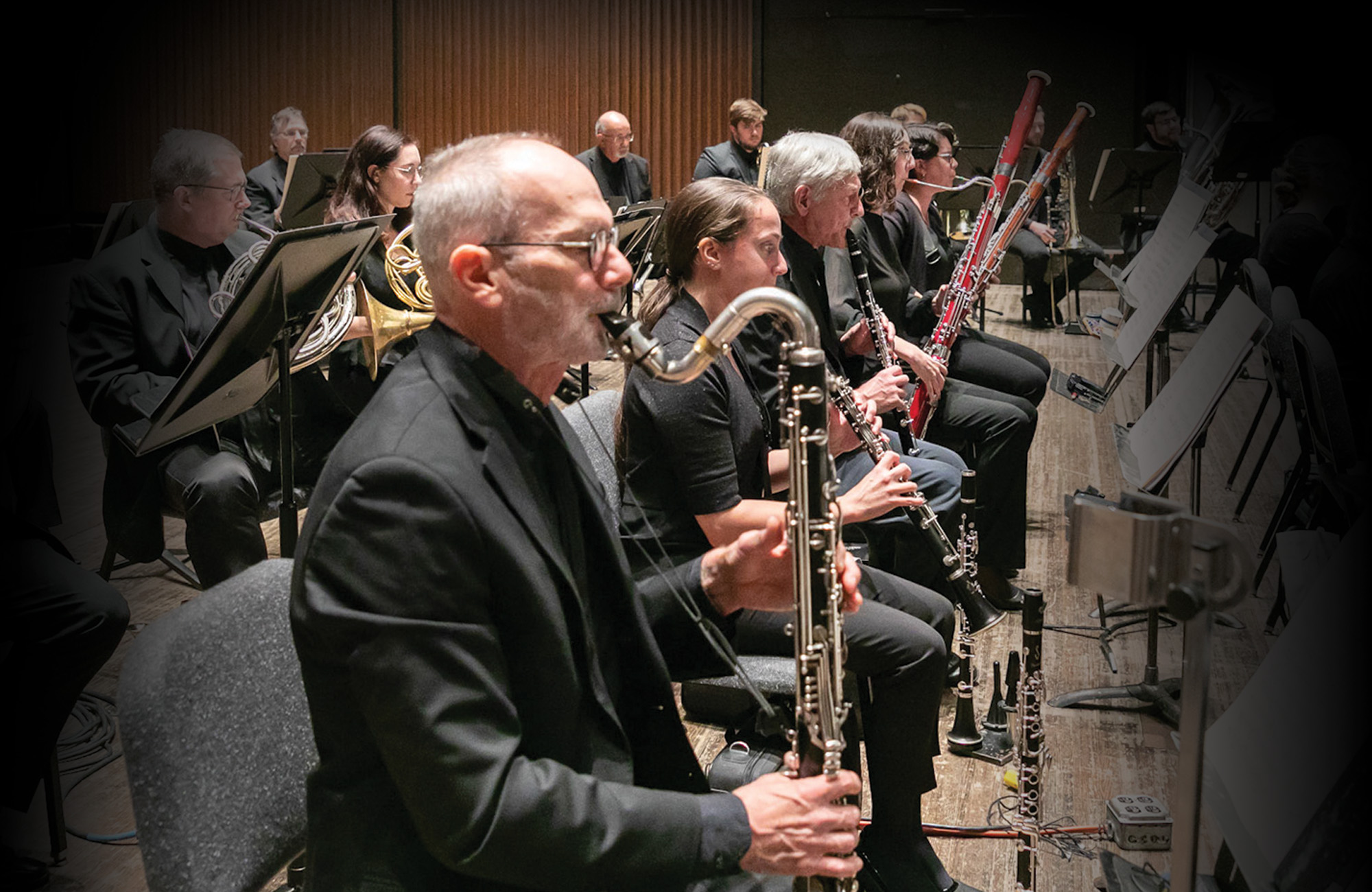
John Friedrichs currently holds the positions of bass clarinet/assistant first chair clarinet with Symphoria and bass clarinet/3rd clarinet with the Springfield (MA) Symphony Orchestra. Originally from Southern California, he performed with the San Diego Symphony Orchestra. Friedrichs attended the Eastman School of Music earning a degree in ...
John Friedrichs currently holds the positions of bass clarinet/assistant first chair clarinet with Symphoria and bass clarinet/3rd clarinet with the Springfield (MA) Symphony Orchestra. Originally from Southern California, he performed with the San Diego Symphony Orchestra. Friedrichs attended the Eastman School of Music earning a degree in Music Performance as well as a Performer’s Certificate. While at Eastman he studied with D. Stanley Hasty, Michael Webster and William Osseck. Friedrichs’s other teachers include Melvin Warner, Edward Yadzinski and Michele Zukovsky.
In 1994, Friedrichs performed the Copland Clarinet Concerto with the Syracuse Symphony Orchestra. Friedrichs also performs with the Society for New Music, the Buffalo Philharmonic, Rochester Philharmonic and Glimmerglass Festival.
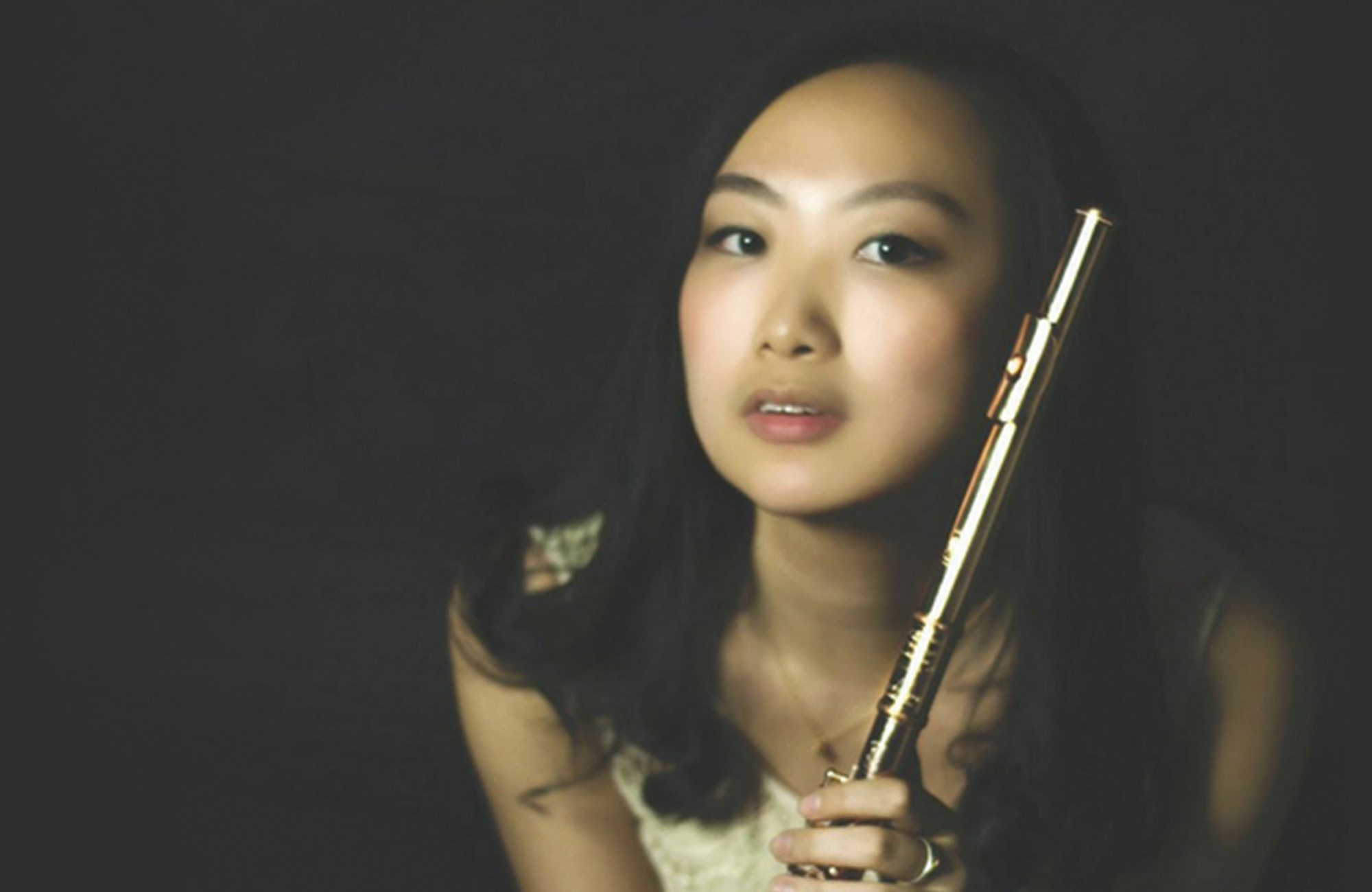
Xue Su is the principal flute of Symphoria (formerly the Syracuse Symphony Orchestra.) Currently residing in New York City, she is dedicated to a career in orchestral performance and music education. Ms. Su performs regularly with the New York Philharmonic, and is a member of Symphony in C. She ...
Xue Su is the principal flute of Symphoria (formerly the Syracuse Symphony Orchestra.) Currently residing in New York City, she is dedicated to a career in orchestral performance and music education. Ms. Su performs regularly with the New York Philharmonic, and is a member of Symphony in C. She recently performed with the New York Philharmonic at the 2018 Asia Tour, 2018 & 2017 Bravo! Vail and Shanghai residencies. She has performed as guest principal flute with orchestra include the New Haven Symphony Orchestra, Princeton Symphony Orchestra and Albany Symphony. Ms. Su has taught as a guest teacher at the Manhattan School of Music’s Orchestral Performance program, as well as the Juilliard School Pre-College.
During the 2018-19 season, Ms. Su makes her Symphoria solo debut with Music Director Lawrence Loh, performing Lowell Liebermann’s virtuosic Flute Concerto. She was featured in Telemann’s A Minor Suite for Flute and Strings with the Syracuse Friends of Chamber Music Ensemble. Her previous solo engagements include performances with Cincinnati Philharmonia Orchestra on Bernstein’s Halil, Mozart’s Concerto in C Major for Flute and Harp, and Brandenburg Concerto No. 2.
Her brilliant musicianship has been recognized by numerous international competitions. In 2013, Ms. Su performed for a 1,500 audience at the Music for All summer symposium as a winner of the Yamaha Young Performing Artist Competition. She was a second prize winner at the National Flute Association’s Young Artist Competition, where she also received the award for best performance of the newly commissioned piece. Her other prize winning competitions include the Maxence Larrieu High School Soloist, Biwako, and Unisa International Flute Competitions.
Ms. Su began playing the flute at age 6. During her childhood music education, she attended the Elementary and Middle Schools of Central Conservatory in Beijing, China. She holds a Master of Music degree in Orchestral Performance from the Manhattan School of Music, where she was a full scholarship recipient. She is an alumna of Cincinnati College-Conservatory of Music and the Juilliard Pre-College.
Ms. Su is greatly indebted to her teachers Robert Langevin, Bradley Garner and Guoliang Han.

Gregory Wood is Assistant Principal Cellist of Symphoria, and was Acting Principal Cellist for the 2014-2015 Season. He was Assistant Principal Cellist of the SSO since 1978. Greg was also a member of the Rochester Chamber Orchestra and he has recently performed with the Detroit Symphony Orchestra, as well as ...
Gregory Wood is Assistant Principal Cellist of Symphoria, and was Acting Principal Cellist for the 2014-2015 Season. He was Assistant Principal Cellist of the SSO since 1978. Greg was also a member of the Rochester Chamber Orchestra and he has recently performed with the Detroit Symphony Orchestra, as well as the Fingerlakes Opera in Geneseo. He was Principal Cellist of Pro Musica of Cincinnati, and performed in the cello section of the Cincinnati Symphony and the Aspen Festival Orchestra. He is adjunct instructor of violoncello and coaches chamber music at the Setnor School of Music at Syracuse University, where he has performed numerous solo and chamber music recitals. In addition to SU, he is also adjunct instructor of violoncello at Onondaga Community College. Greg received his Bachelor of Music Degree in performance at the University of Cincinnati College Conservatory of Music, studying with Lynn Harrell, Jack Kirstein, and Zara Nelsova, including chamber music coaching from the LaSalle Quartet. He also earned his Master of Science Degree in Counseling and Psychology from SUNY Oswego, and a Master of Music Education Degree from Syracuse University. Greg also has a private cello studio and has had two of his former students win the SSO/CMM concerto competition (Lucas Button) and the Symphoria/CMM concerto competition (Brian Gadbow). He appreciates the opportunities which Symphoria offers to young students, and what Symphoria offers to the community, especially the variety of series and programming, and the Healing Harmonies program, which he has participated in.
Greg has performed in many chamber music recitals including the Jewell Trio, the Southwick Trio, Syracuse Friends of Chamber Music, Skaneateles Festival, Society for New Music, and Civic Morning Musicals. He has also performed as soloist with the Syracuse Symphony Orchestra, Syracuse University Orchestra, Cincinnati Pro Musica, the Onondaga Civic Symphony, and the CCM Concert Orchestra as winner of the concerto competition. Greg was given the 2006 Excellence in Chamber Music Performance award from CMM.
Greg was born and raised in Port Washington, Long Island, NY. His first instrument was the piano at age 5, with his mom as his teacher and musical inspiration. He studied both the piano and cello until the age of 12. Greg was in the Wood String Quartet with his 3 brothers. He has performed on acoustic cello with his brother, Mark, in the Trans-Siberian orchestra on Good Morning America and in Syracuse, as well as in area schools playing his six string electric cello in Mark’s Electrify your Strings programs. Greg also has continued his Dad’s tradition of water color painting, stained glass windows, and mosaics. He is also a marathon runner who started in 2010, as a charity runner for the American Cancer Society, running the Philadelphia Marathon. Since then, he has run the Empire State Marathon in Syracuse, and the Hartford Marathon. Greg lives in Camillus with his wife, son, and daughter.


